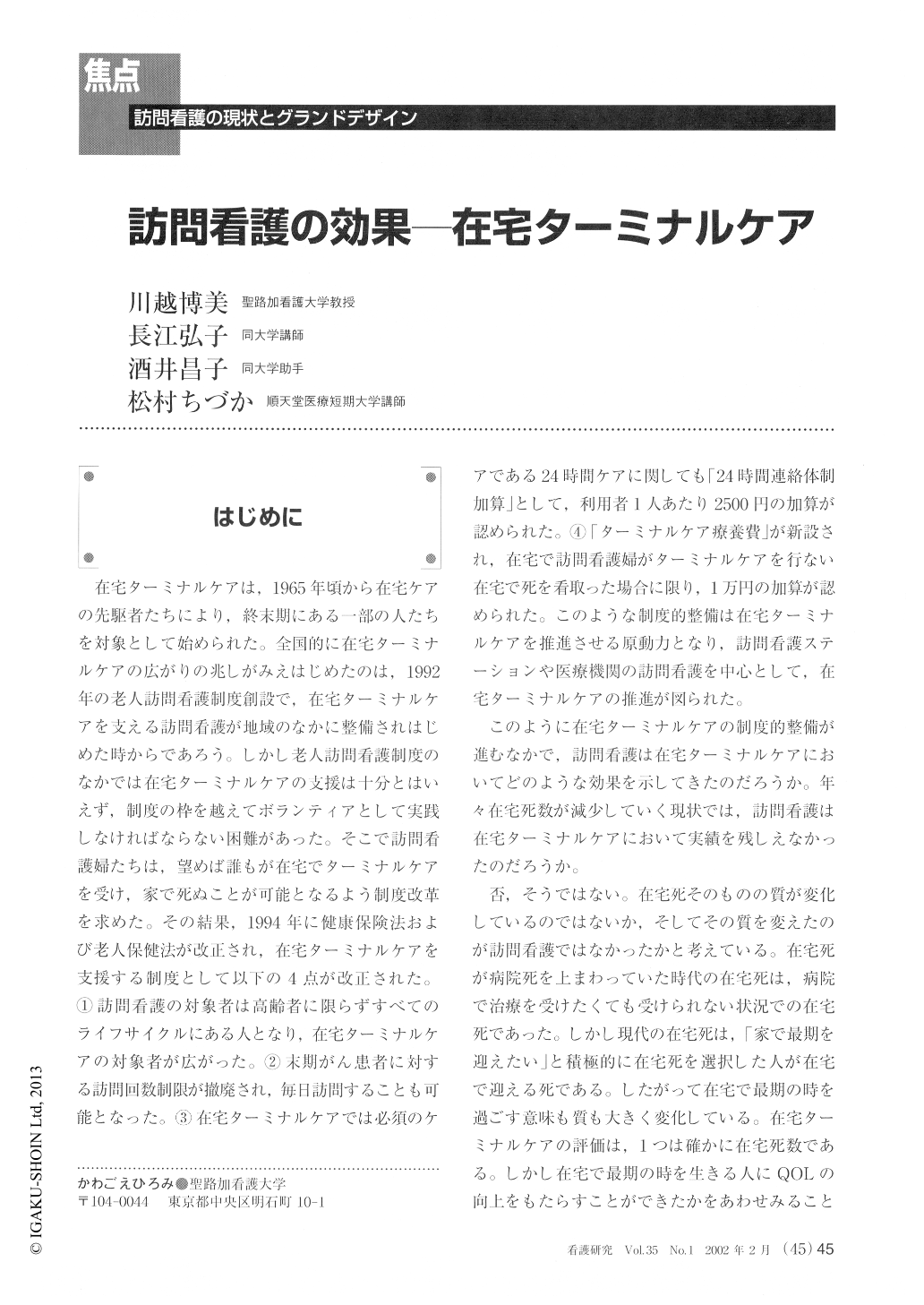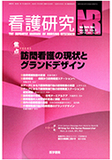Japanese
English
- 有料閲覧
- Abstract 文献概要
- 1ページ目 Look Inside
- サイト内被引用 Cited by
はじめに
在宅ターミナルケアは,1965年頃から在宅ケアの先駆者たちにより,終末期にある一部の人たちを対象として始められた。全国的に在宅ターミナルケアの広がりの兆しがみえはじめたのは,1992年の老人訪問看護制度創設で,在宅ターミナルケアを支える訪問看護が地域のなかに整備されはじめた時からであろう。しかし老人訪問看護制度のなかでは在宅ターミナルケアの支援は十分とはいえず,制度の枠を越えてボランティアとして実践しなければならない困難があった。そこで訪問看護婦たちは,望めば誰もが在宅でターミナルケアを受け,家で死ぬことが可能となるよう制度改革を求めた。その結果,1994年に健康保険法および老人保健法が改正され,在宅ターミナルケアを支援する制度として以下の4点が改正された。①訪問看護の対象者は高齢者に限らずすべてのライフサイクルにある人となり,在宅ターミナルケアの対象者が広がった。②末期がん患者に対する訪問回数制限が撤廃され,毎日訪問することも可能となった。③在宅ターミナルケアでは必須のケアである24時間ケアに関しても「24時間連絡体制加算」として,利用者1人あたり2500円の加算が認められた。④「ターミナルケア療養費」が新設され,在宅で訪問看護婦がターミナルケアを行ない在宅で死を看取った場合に限り,1万円の加算が認められた。このような制度的整備は在宅ターミナルケアを推進させる原動力となり,訪問看護ステーションや医療機関の訪問看護を中心として,在宅ターミナルケアの推進が図られた。
このように在宅ターミナルケアの制度的整備が進むなかで,訪問看護は在宅ターミナルケアにおいてどのような効果を示してきたのだろうか。年々在宅死数が減少していく現状では,訪問看護は在宅ターミナルケアにおいて実績を残しえなかったのだろうか。
The aim of this paper was to show evidence of the effectiveness of home care nursing practice for patients in the end-stage of life in Japan. This paper focuses on the home care nursing practices that enabled death at home and improved quality of life (QOL). Both direct nursing care processes and the nursing system and organizational supports for that care are discussed.
Quantitative and qualitative data describing nursing processes and outcomes provide evidence for effectiveness of home care nursing for the terminally ill. Home death is seen as being enabled by the around the clock system and the provision of nursing services according to the plan at night. Support for self-determination and for the family engaging in terminal care at home (QOL)is attributed to the skillful care provided by the nurses. In addition, the support of the visiting nurse station as a unit for the concept of death at home is described as contributing significantly to the processes of care and the outcomes for patients and their families.
In its conception the paper reflects the position that quality care for the terminally ill must be understood in terms of both process and outcomes and that the quality of nursing care for patients and families depends on skills of individual nurses and also to some extent on the organizational arrangements supporting nurses in the provision care. The results of the analysis confirmed this position. In addition, the analysis supports the need for reflection on nursing processes and also research to clarify the nature of the skillful practice that produces desired outcomes for terminally ill patients and their families through home care.

Copyright © 2002, Igaku-Shoin Ltd. All rights reserved.


